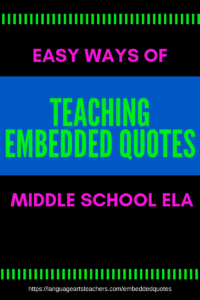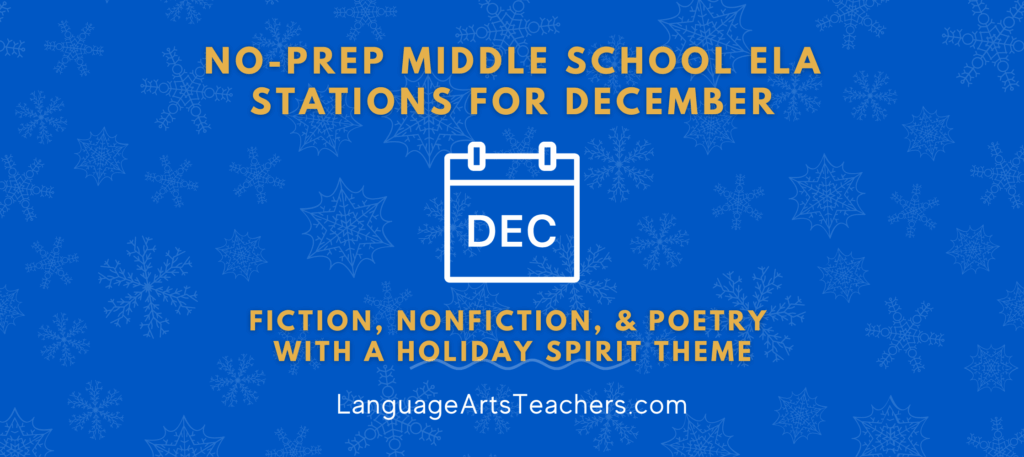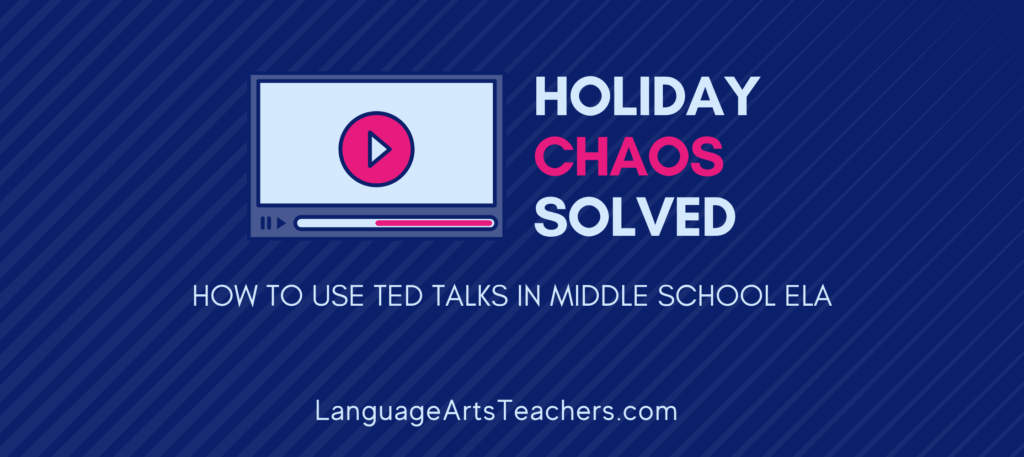Teach your English / Language Arts Students
How to Use Embedded Quotes
Middle School Grades 6-7-8

Whether I’m teaching expository reading and writing or literary reading and writing, teaching my students how and why to use embedded quotes at the middle school level can be tedious and daunting.
Click here if you’d like to use the exact same teachable, interactive Power Points and activities that I use every time I teach my students how to embed quotes into their writing!
Here’s the process I use every time I teach the use of embedded quotes:
I literally start with what the word “embedded” means by showing them that an embedded quote is nice and cozy (embedded) between other types of information. For instance, I ask my students to find the text evidence in a story–any story or any article we’ve just read in class–that best supports the reason why blah blah blah. So just make up an open-ended question about something you’ve read recently and ask the class to find the best evidence.
Have a student read that quote aloud and you can jot it down on the board (right smack in the middle of the board so there’s space above the quote and below the quote).
“Jacob never knew his parents, never knew his siblings, and never knew that they never stopped thinking about him.”
Make a point about how that quote is so cold and lonely up there all by itself! To warm it up, you need to embed it! (Yes, yes, with middle school kids there will likely by some suggestive, raunchy jokes, but we all know that comes with the territory. Ignore it and move on).
So talk with your class about what made them choose THAT exact quote? What is it an example of? Which event in the story or in the article led up to that piece of text evidence? Ok, so write a sentence or two based on what your students are telling you on the board ABOVE the quote (So you just taught them and showed them how to make sure that what they are explaining and talking about is followed up with a relevant quote).
In the story, Jacob lives in a series of foster homes because of one misunderstanding years and years ago, back before he was even born. Now, 14 years later, Jacob knows nothing of his personal history.
“Jacob never knew his parents, never knew his siblings, and never knew that they never stopped thinking about him.”
Now you have a couple sentences explaining a particular situation or viewpoint and you have the quote (properly punctuated, of course).
But that quote is still lonely-looking. It’s in a sentence all by itself. It needs to be wrapped up in your own words! Show your students how you can say something like
According to the narrator, “Jacob never knew his parents, never knew his siblings, and never knew that they never stopped thinking about him” which indicates the love his family has for him and foreshadows the events of the story.
Now you have a nice, warm, fuzzy embedded quote (and an opportunity for a quick review of foreshadowing as a literary technique).
So now you have something like this on your board:
In the story, Jacob lives in a series of foster homes because of one misunderstanding years and years ago, back before he was even born. Now, 14 years later, Jacob knows nothing of his personal history. According to the narrator, “Jacob never knew his parents, never knew his siblings, and never knew that they never stopped thinking about him” which indicates the love his family has for him and foreshadows the events of the story.
Here’s what you need to talk about before moving on:
-
Ask your students what verb tense you wrote the entire paragraph in (present tense–that’s the proper way to do it!).
-
Ask your students to point out what they notice about the punctuation in that sentence with the embedded quote (the capitalization, the comma before the quote, etc.)
-
Discuss the concept of “commenting” or “providing commentary” on the quote. In other words, talk with your students about how you can’t just end the quote and stop without anything else to say. You have to say something about the quote, like what the reader learns from it or what new perspective the quote brings to the reader.
-
Check out my super-easy, interactive ideas for teaching students how to add commentary to the embedded quotes and other text evidence by clicking here!
If you need help with step-by-step instructions and scaffolded activities for struggling students, I’ve got that! Shoot me an email and I’ll send you my collection of embedded quotes lessons and activities you can use right now 🙂




